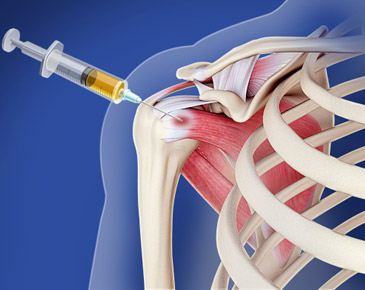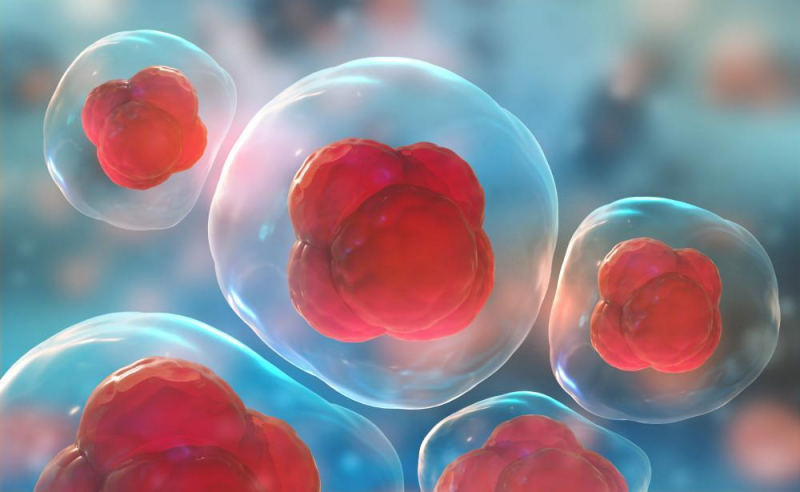Neurodegenerative Diseases
Parkinson's Disease: Stem cells can replace damaged dopamine-producing neurons in the brain, potentially alleviating symptoms of Parkinson’s disease.
Alzheimer’s Disease: Although still in research stages, stem cells have the potential to replace damaged brain cells and improve cognitive function.
Amyotrophic Lateral Sclerosis (ALS): Stem cell therapies may offer hope for regenerating motor neurons damaged by ALS, although research is ongoing.
Multiple Sclerosis (MS): Stem cells can repair damaged nerve cells and help regenerate myelin, the protective covering of nerve fibers, potentially improving mobility and reducing disability.
3. Orthopedic and Musculoskeletal Conditions
Osteoarthritis: Stem cells can regenerate damaged cartilage and reduce inflammation in joints, improving mobility and reducing pain.
Rheumatoid Arthritis: Stem cells can help reduce inflammation and modulate the immune response in autoimmune diseases like rheumatoid arthritis, possibly slowing or halting disease progression.
Bone and Cartilage Damage: Stem cells can help regenerate bone tissue and repair cartilage damage caused by trauma or degenerative conditions.
Spinal Cord Injuries: Stem cells have the potential to regenerate damaged spinal cord tissue, which can improve movement and sensation in patients with spinal cord injuries.
4. Blood and Immune System Disorders
Leukemia and Lymphoma: Stem cell transplants (typically hematopoietic stem cells from bone marrow or blood) are a standard treatment for blood cancers, replacing damaged bone marrow and regenerating healthy blood cells.
Sickle Cell Disease: Stem cell therapy can be used to replace defective blood cells with healthy ones, offering potential cures for this genetic disorder.
Aplastic Anemia: In this condition, the bone marrow fails to produce sufficient blood cells. Stem cell transplants can replace the faulty bone marrow and restore blood cell production.
Thalassemia: Stem cell transplants can replace the defective blood-producing cells in patients with this inherited blood disorder.
5. Endocrine and Metabolic Disorders
Diabetes: Stem cells, particularly pancreatic stem cells, can be used to regenerate insulin-producing cells in the pancreas, offering the potential to treat Type 1 diabetes or improve insulin function in Type 2 diabetes.
Hypothyroidism: In cases of thyroid damage or dysfunction, stem cells may help regenerate thyroid tissue and restore normal hormone production.
6. Eye Diseases and Vision Loss
Macular Degeneration: Stem cells may be able to regenerate retinal cells, offering hope for treating age-related macular degeneration (AMD) and other causes of vision loss.
Retinitis Pigmentosa: Stem cell therapy has been investigated as a way to replace damaged retinal cells in patients with inherited retinal diseases like retinitis pigmentosa.
Stem cell therapy holds great promise for cardiovascular diseases, offering the potential to regenerate damaged heart tissue, improve blood flow, reduce inflammation, and restore heart function. It represents an exciting avenue for treating chronic heart conditions, such as heart failure and coronary artery disease, that have limited treatment options. However, more research and clinical trials are necessary to fully understand the long-term effects and risks associated with these therapies. As the science advances, stem cells could play an increasingly important role in treating heart disease, improving patient outcomes, and reducing the need for heart transplants or other invasive interventions.

1. Gene Editing and Stem Cells:
Stem cells can be used as a platform to apply gene editing techniques like CRISPR-Cas9 to correct genetic mutations. This combination of stem cells and gene editing allows for the direct correction of defective genes in the patient’s cells.
Ex Vivo Gene Editing: In this method, stem cells (often hematopoietic stem cells, mesenchymal stem cells (MSCs), or induced pluripotent stem cells (iPSCs)) are extracted from the patient. These cells are then edited outside the body (ex vivo) to correct genetic mutations. After the editing process, the corrected stem cells are transplanted back into the patient. This approach has been used for genetic blood disorders like sickle cell anemia and beta-thalassemia, where the patient's own stem cells are edited to correct the mutation and then reintroduced to produce healthy blood cells.
In Vivo Gene Editing: Gene editing can also be done inside the body using stem cells that are capable of integrating the corrected gene into the patient's tissues. However, in vivo editing using stem cells is still largely experimental and involves challenges such as effective delivery of the editing tools to the right cells.
2. Gene Delivery via Stem Cells:
Stem cells can act as vectors for delivering corrected or therapeutic genes directly into the patient’s tissues. This method can be especially beneficial for conditions where specific tissues need to be targeted.
Mesenchymal Stem Cells (MSCs): MSCs have been explored as carriers for gene therapy due to their ability to home in on areas of tissue damage or inflammation. For example, in cystic fibrosis, MSCs can be engineered to deliver a functional copy of the CFTR gene (the defective gene in cystic fibrosis) directly to the lung tissue, where it can replace the faulty gene and restore normal lung function.
iPSCs (Induced Pluripotent Stem Cells): iPSCs can be derived from the patient's own cells, reducing the risk of immune rejection. They can be genetically modified to carry a healthy version of the gene that is defective in the patient’s body and then differentiated into the necessary cell type (e.g., liver cells for alpha-1 antitrypsin deficiency or muscle cells for Duchenne muscular dystrophy) before being introduced into the patient.
3. Stem Cells and Genetic Disease Models:
Stem cells, particularly iPSCs, can be used to create patient-specific disease models. This allows researchers to study the genetic disorder in a lab setting and test potential gene therapies before applying them to the patient.
Disease Modeling: By taking a patient’s cells (e.g., skin cells) and reprogramming them into iPSCs, researchers can generate the specific type of cells that are affected by the genetic disorder (such as nerve cells in Parkinson’s disease or muscle cells in Duchenne muscular dystrophy). This model can be used to study the disease at the cellular level and test different gene therapies or drug treatments in a controlled environment, increasing the likelihood of finding a successful therapy.
Drug Screening: Using iPSCs derived from patients with genetic disorders, researchers can screen for potential drugs or gene therapies that could correct the genetic defects, offering a personalized approach to treatment.
4. Stem Cells and Tissue Regeneration:
In some genetic disorders, stem cells not only provide a method for gene therapy but also help regenerate the damaged tissues that result from the disease. For example:
Duchenne Muscular Dystrophy (DMD): DMD is a genetic disorder that causes muscle degeneration. Stem cells (especially muscle-derived stem cells) can be used to regenerate muscle tissue. These stem cells can be genetically modified to carry a corrected version of the dystrophin gene (the defective gene in DMD), which helps repair the damaged muscle fibers and restore muscle function.
Cystic Fibrosis: Stem cells can regenerate lung tissue in patients with cystic fibrosis, and with gene therapy, these stem cells can be genetically corrected to produce a functional CFTR protein, providing a dual benefit of both tissue regeneration and genetic correction.
5. Overcoming the Limitations of Gene Therapy:
Gene therapy faces several challenges, including difficulties in effectively delivering therapeutic genes to the right cells, ensuring long-term gene expression, and overcoming immune responses. Stem cells can help address some of these limitations:
Long-Term Gene Expression: Stem cells have the potential to divide and renew over time. When stem cells are used for gene therapy, they can continue to produce the therapeutic gene throughout the patient’s lifetime. This is particularly helpful for genetic disorders where the gene therapy needs to be continuously expressed, such as in hemophilia (where a clotting factor needs to be continuously produced) or cystic fibrosis (where CFTR production is needed to maintain healthy lung function).

Reducing Immune Rejection: Using autologous stem cells (stem cells derived from the patient’s own body) for gene therapy reduces the risk of immune rejection. This is particularly important in diseases where long-term treatment is required. For example, using the patient’s own iPSCs, which are genetically identical to the patient’s cells, can minimize the risk of the immune system attacking the newly introduced genetically modified cells.
6. Examples of Genetic Disorders Treated with Stem Cell and Gene Therapy
Sickle Cell Anemia: Using stem cells, researchers have successfully corrected the mutation in the hemoglobin gene using CRISPR-Cas9 and transplanted the edited stem cells back into patients. This has shown promise as a potential cure for sickle cell disease.
Beta-Thalassemia: Similar to sickle cell anemia, gene therapy using stem cells has been used to correct the mutations in the beta-globin gene, offering hope for patients with this blood disorder.
Cystic Fibrosis: Stem cells derived from the patient’s lungs or other tissues can be edited with a functional CFTR gene and then reintroduced into the patient, potentially correcting the underlying defect.
Duchenne Muscular Dystrophy: Stem cell therapy, combined with gene editing, has the potential to replace or repair the defective dystrophin gene, regenerating muscle tissue and improving muscle strength.
7. Challenges and Future Directions
Safety: Gene therapy involving stem cells raises concerns about the possibility of tumor formation or unwanted genetic changes. Ensuring the safety of stem cells after genetic modification is critical.
Efficiency of Delivery: Efficiently delivering the edited genes or therapeutic genes to the right cells remains a challenge. Research is focused on improving the delivery methods to ensure that gene therapy reaches its target tissue effectively.
Ethical Concerns: The use of stem cells, particularly embryonic stem cells.






